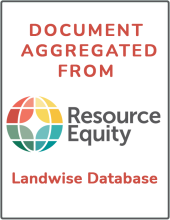Land Library Search
Through our robust search engine, you can search for any item of the over 73,000 highly curated resources in the Land Library.
If you would like to find an overview of what is possible, feel free to peruse the Search Guide.
/ library resources
Showing items 1 through 9 of 145.Forestry in the Southeastern United States has long focused on converting natural stands into pine plantations or managing exclusively for hardwoods.
Establishing reliable carbon baselines for landowners desiring to sustain carbon sequestration and identify opportunities to mitigate land management impacts on carbon balance is important; however, national and regional assessments are not designed to support individual landowners.
This study analyzed the perceptions of four stakeholder groups (forest landowners, private forest consultants, forest management researchers or educators, and federal or state agency foresters), regarding their management practices and preferred geographic growing conditions of loblolly pine in V
Forest fragmentation and degradation are a problem in many areas of the world and are a cause for concern to land managers. Similarly, countries interested in curtailing climate change have a keen interest in monitoring forest degradation.
Forest land managers rely on predictions of tree mortality generated from fire behavior models to identify stands for post-fire salvage and to design fuel reduction treatments that reduce mortality.
High severity stand-replacing wildfires can deeply affect forest ecosystems whose composition includes plant species lacking fire-related traits and specific adaptations.
In fire-adapted conifer forests of the Western U.S., changing land use has led to increased forest densities and fuel conditions partly responsible for increasing the extent of high-severity wildfires in the region.
Forest managers need access to targeted scientific information about the impacts of climate change in order to adapt to climate change.

